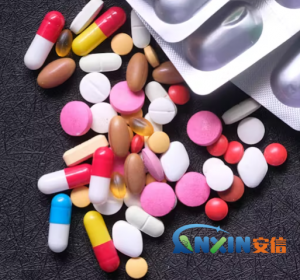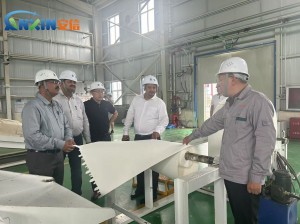Hydroxypropyl methylcellulose (HPMC) is a nonionic, semisynthetic polymer derived from natural cellulose. It is widely used in pharmaceutical formulations as a key excipient in tablets, capsules, controlled-release systems, and ophthalmic preparations. Due to its excellent physicochemical properties and biocompatibility, HPMC has become one of the most important cellulose derivatives in pharmaceutical excipient systems.
1. Physicochemical Properties
HPMC is a white or off-white powder that is tasteless, odorless, and non-toxic. It dissolves in cold water to form transparent or translucent solutions. Its molecular structure contains methoxy (–OCH₃) and hydroxypropoxy (–OCH₂CHOHCH₃) substituents, giving HPMC both excellent hydrophilicity and thermal gelation properties. The viscosity of HPMC varies depending on the degree of substitution and polymerization. Pharmaceutical-grade products are often categorized into low, medium, and high viscosity ranges to meet the needs of different formulation processes. HPMC also exhibits excellent pH stability, remaining stable within the pH range of 2 to 12 and unaffected by acid and alkali reactions.
2. Key Performance Characteristics
2.1. Thickening and Film-Forming Properties
HPMC solutions exhibit high viscosity and rheological stability, making them excellent thickeners and film-forming agents. In tablet coatings, HPMC forms a uniform, dense film, imparting excellent appearance, mechanical strength, and moisture resistance. Furthermore, its high transparency and pleasant mouthfeel do not affect the appearance or ingestion experience of the drug.
2.2. Moisturizing and Sustained-Release Properties
HPMC exhibits excellent water-retention capacity, preventing tablets from deforming due to moisture absorption during storage. In sustained-release formulations, HPMC forms a viscoelastic gel layer in gastrointestinal fluids, controlling drug diffusion and dissolution rates, thereby achieving prolonged release. By adjusting the degree of substitution, viscosity grade, and dosage of HPMC, diverse release profiles can be flexibly designed, achieving zero-order or near-zero-order release.
2.3. Binding and Suspension Stability
In wet granulation, HPMC, as a binder, can enhance the mechanical strength of granules, improve tablet compression performance, and reduce dusting and delamination issues. In oral suspensions, HPMC effectively prevents particle sedimentation and enhances system stability.
2.4. Biocompatibility and Safety
HPMC is naturally derived and has extremely high biocompatibility. It is not absorbed by the human body and is metabolically safe. Its lack of charge minimizes the chemical stability of active pharmaceutical ingredients and does not interact with most drugs, making it widely used in formulations.
3. Typical Applications
3.1. Tablets and Capsules
In tablets, HPMC can be used as a binder, coating agent, and controlled-release matrix material. In hollow capsules, HPMC is an ideal substitute for gelatin, enabling the production of vegetarian capsules with excellent moisture resistance and stability.
3.2. Sustained-Release and Controlled-Release Formulations
HPMC is one of the most commonly used hydrophilic gel matrix materials, suitable for oral sustained-release tablets, micropellets, and osmotic pump tablets. It regulates drug release rate through the gel layer, achieving sustained efficacy.
3.3. Ophthalmic and Topical Formulations
In artificial tears and eye drops, HPMC acts as a lubricant and thickener, improving drug retention and comfort. In topical ointments and gels, it enhances film-forming properties and moisturizing effects.
HPMC, with its excellent physical and chemical properties, stability, and safety, holds a significant position in the pharmaceutical excipient field. Whether in traditional solid dosage forms or modern controlled-release, implantable, or biopharmaceutical applications, HPMC demonstrates broad application potential. With the advancement of pharmaceutical formulation technology, the functionalization and refinement of HPMC in high-end formulation systems will become a key area of future pharmaceutical excipient research.
Post time: Oct-13-2025








